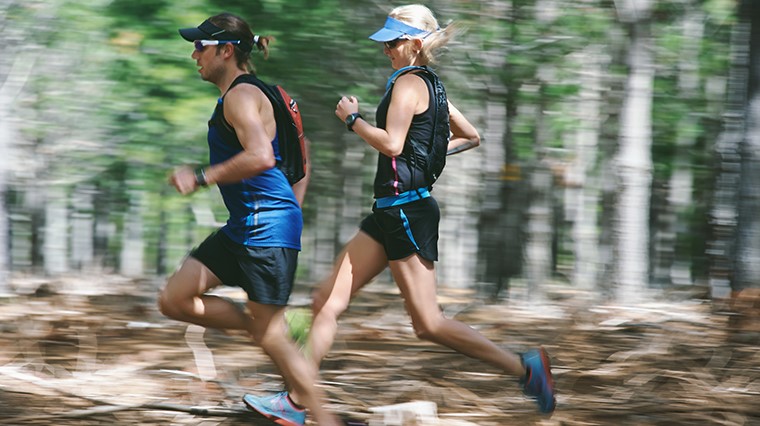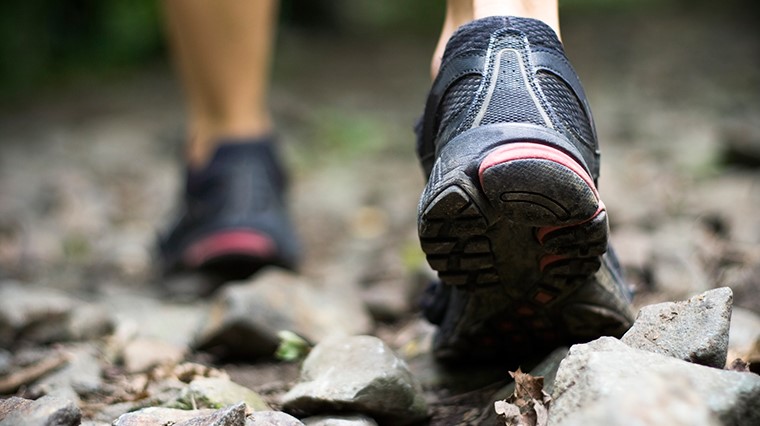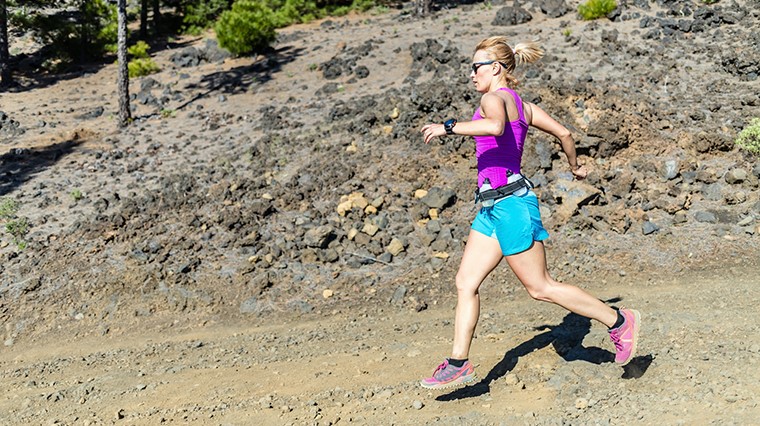A Runner’s Guide: How To Transition From Road Running To Trail Running

Ever contemplated switching your street or gym runs for the more natural terrain of running trails? Besides being mindful of Drop Bears in their natural habitat (Vegemite behind the ears is thought to be one possible repellent) we've put together 6 other tips to help you make the transition to trails without too many trip-ups.
Choose Trails That Suit Your Ability
We love a challenge, but to start off, be kind to your body and allow it (and your mind) to adapt by opting for shorter, less technical trails.
Non-technical trails are soft and typically flat, wide and free of hazards like roots and stones, whereas highly technical trails may include rivers, steep inclines/declines, or even call for using both hands and feet to climb natural obstacles.
Keep an eye out for signposts providing a guide to the difficulty level, and gradually tackle longer and more challenging trails as your mental focus, skill and physical fitness increases.
Be Prepared
Trail running allows you to connect with the raw, untouched world around you. That being said, there may not be a local shop in easy reach and therefore bringing plenty of hydration and energy nutrition is a must.
Keep a small medical kit in your car to patch up scrapes and minor injury, and be aware that creepy crawlies such as ticks and leeches (and the aforementioned Drop Bears) may be hungry to hitch-hike a ride, so pack appropriate deterrents.
Trail Running Shoes Are Your New Best Friend

The key difference between road running and trail running shoes is traction, and it’s easy to see by comparing the outsoles of each.
Engineered to tackle rugged terrain, trail running shoes are aggressive and durable with deep traction patterns and prominent lugs to provide grip on uneven, slippery or jagged natural surfaces - because the last thing you want is a face full of mud when you’re enjoying the great outdoors!
They are heavier and provide greater protection than road running shoes, are designed to stabilise your ankles to prevent twists, may feature extra toe protection against rocks and may also feature waterproof Gore-Tex membranes for keeping your feet dry from wet terrain or wet weather.
Scan Ahead And Run Mindfully
Trails are naturally unpredictable and therefore mental clarity and awareness of potential obstacles ahead is essential. Scanning ahead 1.5 - 3m can make the difference between gliding smoothly around an obstacle or tripping.
At the speed you're moving, you want to make sure you have adequate reaction time to respond to a fellow trail runner, fallen branch or even a snake in your path.
Eventually, your subconscious will do the hard work of scanning ahead as it becomes second nature with practice, and your body will instinctively follow suit to step with precision and avoid obstacles.
Adapt Your Running Posture and Rhythm

Road warriors must change their running posture and rhythm when transitioning from road to trail. You may be used to setting a consistent pace when pounding on tarmac, but the unpredictable nature of trails means you need to be skilled at 'changing gears' when the situation calls for it.
Short, quick strides increase your control to navigate obstacles, and your arms are another useful tool for balance and stability - extend them to the sides if needed, particularly on steep descents or rocky terrain.
Run By Feel
Running on trails will take longer compared to tackling the equivalent kilometres on the pavement due to the natural ascents/descents, increased lateral motion and varied, challenging terrain - so don’t sweat it if you feel like you’re coming up short when it comes to time.
Leave running by pace to the roads, because out in the wild running by feel or effort will give you the most exhilarating experience while having realistic expectations.
Disciplined walking uphill is completely acceptable, and be sure to take the time to stop and smell the eucalypts.
